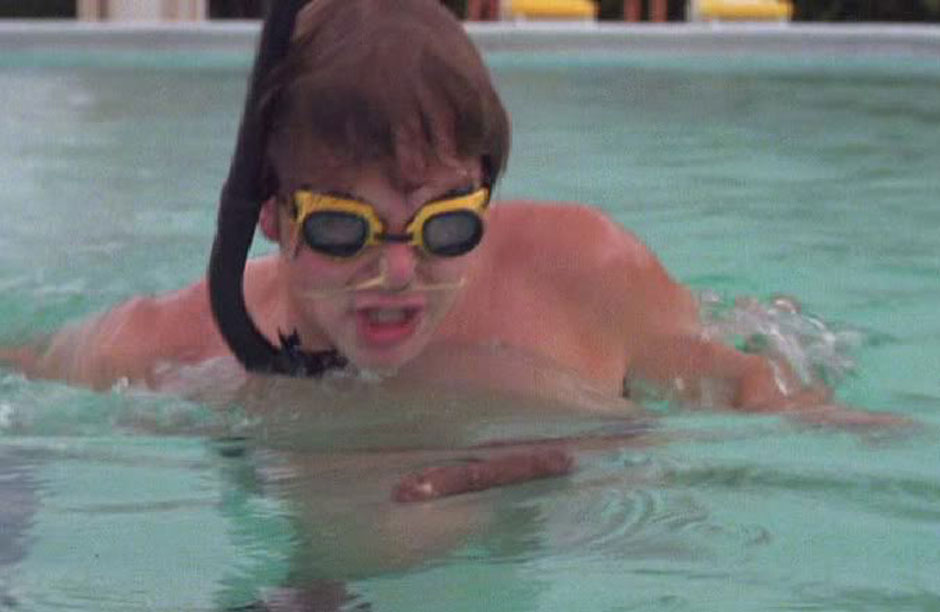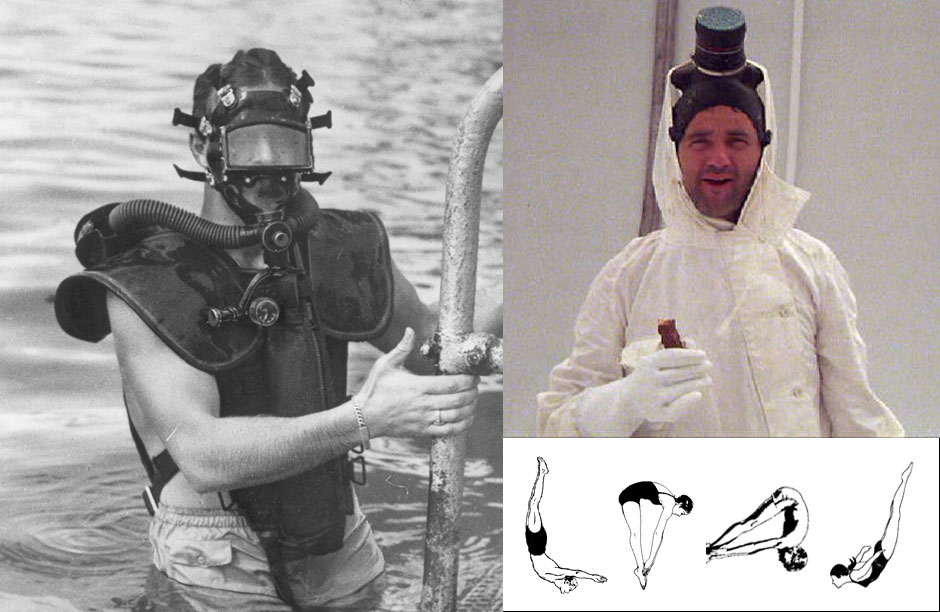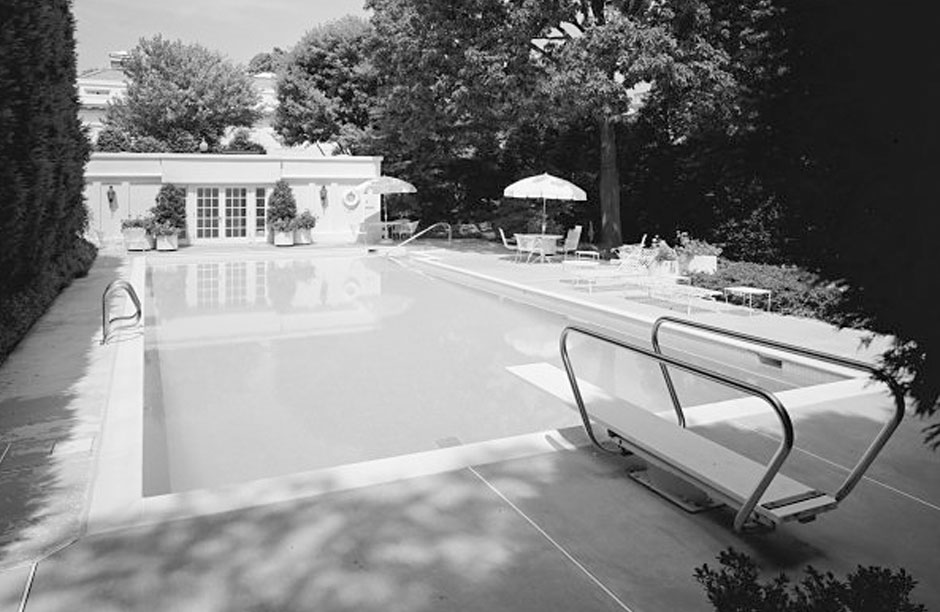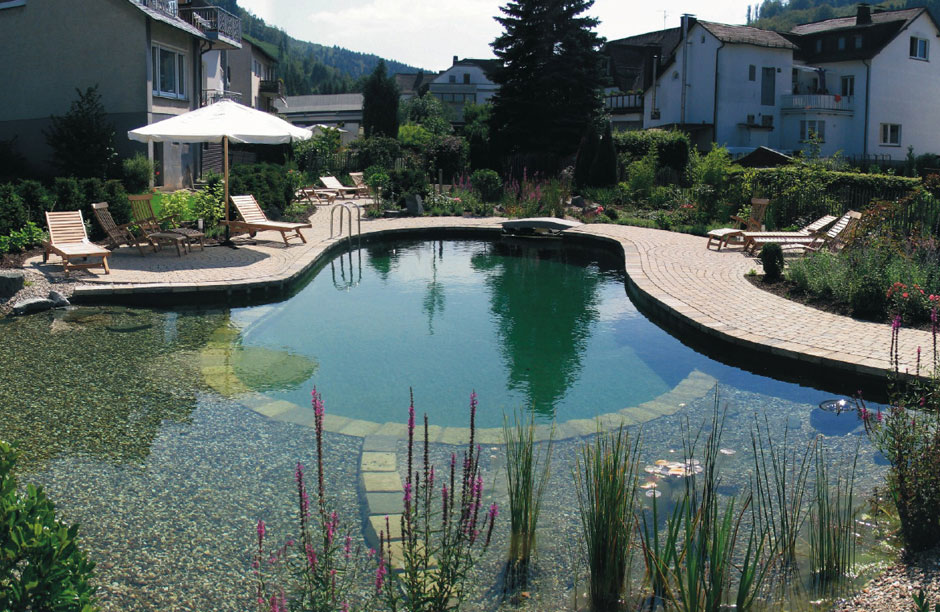PAST ISSUES

ISSUE No.1 WATER
In our premier issue we start with the source of all life: water. The Water Issue travels to the ends of the earth and beyond - from Central Africa, to Sweden, to the Palestinian Territories, and even into Outer Space. A movie producer takes a break from the high stress world of Hollywood to learn to surf - a 1 week vacation turns into 1 year as she becomes a student of water the "greatest teacher I have ever known" - Philippe and Alexandra Cousteau share the Legacy of their grandfather's love for the ocean - the obsession with bottled water falls under scrutiny...and more.

 A film still from the movie "Caddyshack" (1980)
A film still from the movie "Caddyshack" (1980)
 The White House swimming pool uses UV and Reverse Osmosis treatment as an alternative to traditional chlorine treatment.
The White House swimming pool uses UV and Reverse Osmosis treatment as an alternative to traditional chlorine treatment. A Natural Swimming Pond that utilizes a natural wetland as filtration for fresh water recreational pools.
A Natural Swimming Pond that utilizes a natural wetland as filtration for fresh water recreational pools.
Pool Report
By Adam SchroederThe swimming pool is a symbol of the American Dream, or at least it feeds into the mythology of an All-American good time. There is something about the dive or the plunge into a chlorinated hole of electric blue that presents the illusion of refreshment – of a fun, healthy summer. But, there is a distinct irony here. The fact is, few people honestly consider the health risks of literally swimming in chemicals. Recent studies have revealed chlorinated swimming pools as human built “dead zones” (aquatically speaking) that present health risks such as respiratory problems and bouts of diarrhea. One accidental gulp of pool water laced with the chlorine resistant Cryptosporidium bacteria (aka “Crypto”), will send your tots home with a superhero-sized case of diarrhea. Considering that these dangers exist, it seems there is no better time than now for schools, health clubs and homeowners alike to start thinking about safer alternatives.
On a certain level, it is evident why the idea of a swimming pool has become a symbol of the American Dream. Clean water is the life breeding element from which all life forms were born. Consequently, the concept of having this biological landscape on ones property, strictly for recreational purposes, is appealing to most people. The misconception situated in this line of thought exists in the reality that swimming pools are not biological landscapes. Chlorine creates a ground zero for life forms on a microbial level. Further more, for a multicelluar creature (like a human being) it has been proven in lab tests to harden arteries, destroy proteins in the body, irritate the skin and sinuses, and aggravate asthma, allergies and respiratory problems. In other words, water in a swimming pool is essentially the antithesis of the life breeding element from which all life is sustained.
The most supreme example of the health hazards caused by chlorinated swimming pools exists in the indoor, public domain. Since the space is open to the public, the water is pumped with higher levels of chlorine, which harm both the swimmers and those who work in the establishment. Take the case of Analisa Cipriano. Analisa is a twenty-two year old track runner from Connecticut College, who developed asthma only after working as a lifeguard in the East Hampton YMCA for three consecutive summers in a row.
“I’ve been running track for years, in high school and college, and I only developed asthma after my third summer working that job!”
There is something to be said about a young, athletic and otherwise healthy woman developing a lung problem after working at a job for two and a half months out of the year, and for only three summers. If Analisa was affected after such a small amount of time, what is to be said about folks who make their living as indoor lifeguards?
But to even further strengthen this argument, it seems crucial to examine all of the possible risks that chlorine presents to human health. Studies also show that one of the most dangerous characteristics of chlorine is that it can create harmful chemical compounds when subjected to certain “matter”. For instance, matter such as leaves and other vegetation, human perspiration, skin cells and urine creates deadly toxins such as dioxin and PCBs – along with carcinogens such as “THMs” (trihalo-methanes) – when mixed with chlorine. It follows that this poses a threat to swimmers since they absorb chemicals easily through their skin and through inhalation. Despite that it has not been proven that swimming in a chlorinated pool causes cancer; it is still indisputable that chlorine creates harmful chemical compounds when mixed with very accessible matter. Consequently, a logical progression of thought ought to dictate that it is in everyone’s best interest to at least look at safer alternatives.
The next question is: What are the safer alternatives? The answer lies in a host of options from salt water pools, to pools treated with a reverse osmosis and UV systems to the “natural swimming pool” also known as a “constructed wetland” or ” swimming pond”. “Natural swimming pools” are already quite popular in Europe and haven’t yet caught on in the US. A company out of Idaho called Whole Water Systems is trying to bring the European design to the States. “Natural Pools” filter water through biological filters, such as layers of sand and gravel sustained by planted greenery that harbor “good bacteria” which combat “bad bacteria” in the main swimming area. A waterfall can also be added for aeration. The reverse osmosis choice consists of fresh, clean water – rather than pumping it full of chemicals – that passes through a filter, where a skimmer collects unwanted debris, and a UV sterilizer polishes off the water cleaning process to assure biological safety.. Therefore, if a beach club member or a wealthy homeowner finds themselves in the same “doodie” predicament as the unfortunate young soul in Harold Ramsis’s cult classic Caddyshack (1980), it would not be necessary to drain the pool. Instead, the filtration system or the biological filters of a constructed wetland, would take care of everything.
Morgan Brown, founder of Whole Water Systems also weighs in on the bottom-line benefits of natural pools, “Owners don’t have to pay for expensive chemicals, energy costs are lower and the maintenance required is significantly less. Since a natural pool is a healthy eco-system in equilibrium, it does a much better job of taking care of itself.” And on a primal level he adds, “…there’s a certain sex appeal to swimming in natural water free of harsh chemicals – it’s just a much more pleasant experience.”
As a final thought, it is important to return to the claim that in a lot of ways the swimming pool is a symbol of the American Dream. However, it is most ironic that the White House; i.e. the grand extension of the American Dream; does not have a chlorinated swimming pool. Instead, the White House has one that uses the reverse osmosis system. Consequently, it seems that the greater implication is not to abandon the symbol of this American privilege but to merely upgrade to a safer, more environmentally friendly dream.